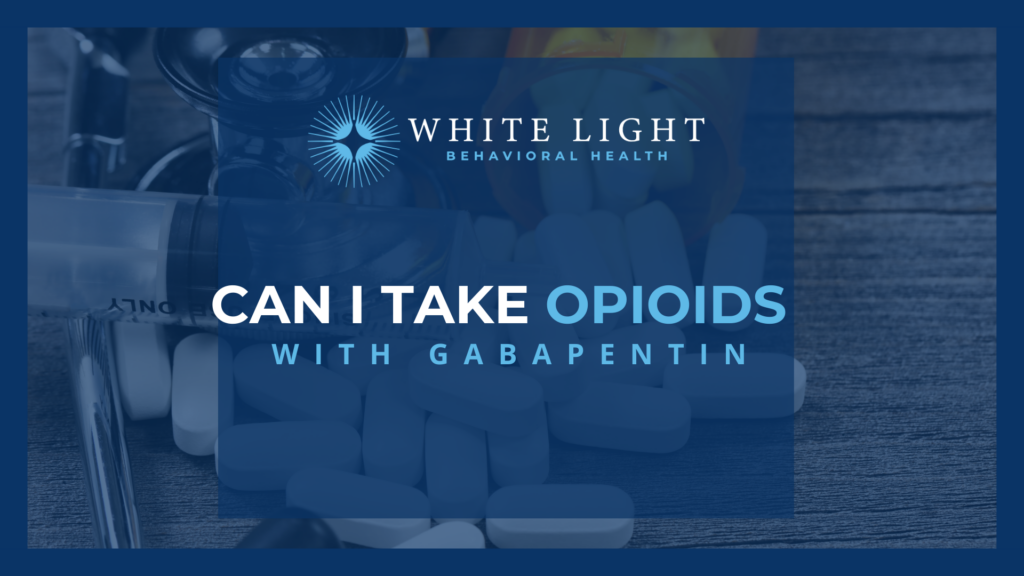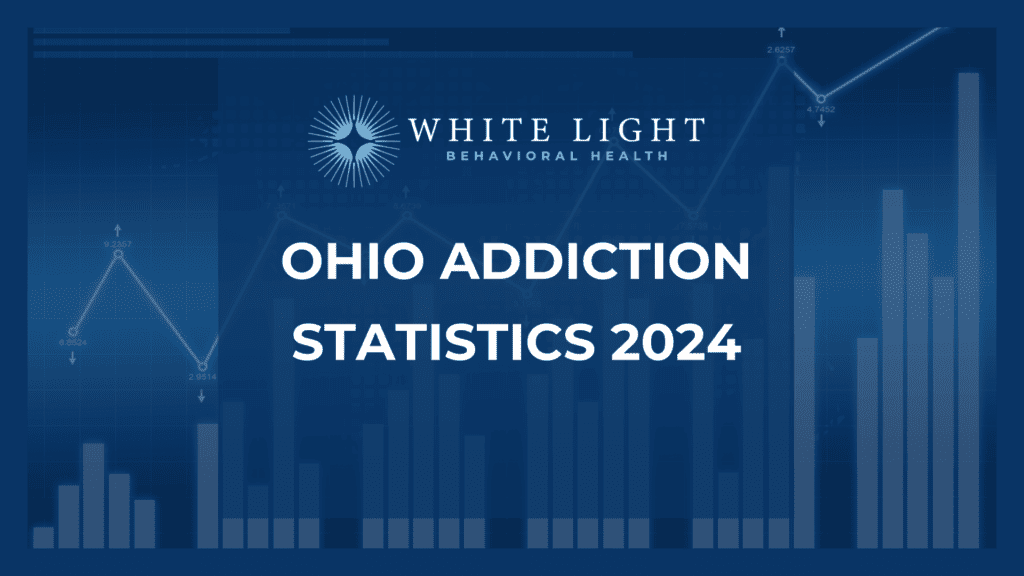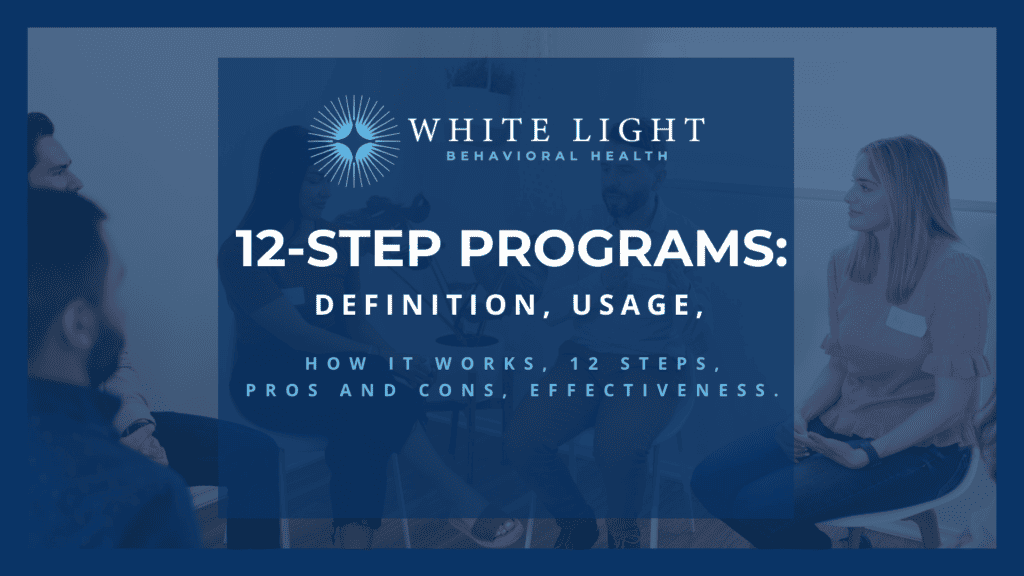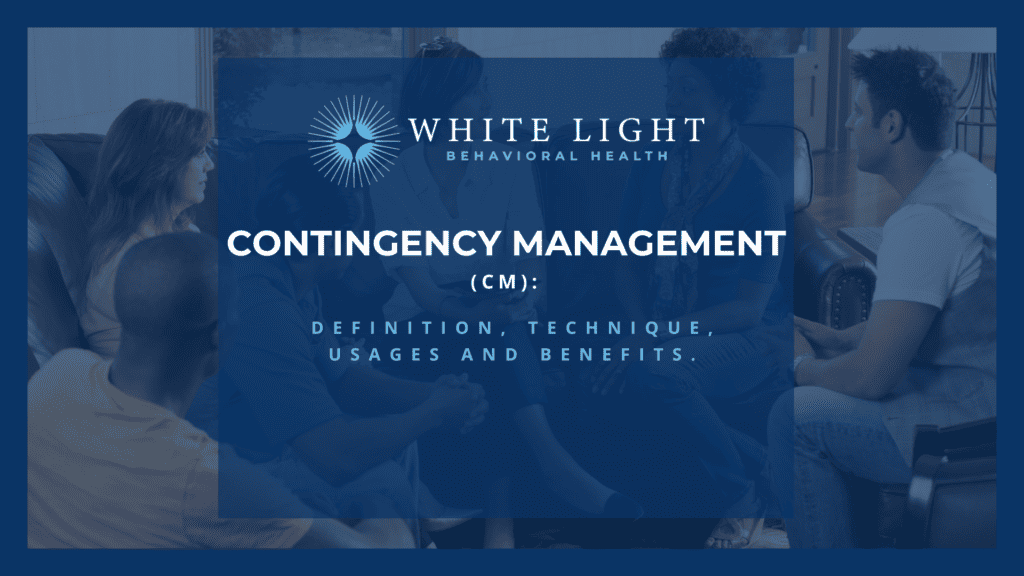Mixing opioids and Gabapentine is dangerous and can lead to overdose and other serious complications. Individuals with a history of pain and mental health conditions who use a combination of gabapentin (GABA), opioids (OP), and benzodiazepines (BZD) face higher risks of respiratory depression and overdose related to opioids and other substances compared to those who only used opioids or gabapentin separately according to Olopoenia et al. (2022). The Lancet Regional Health – Americas, 13, 100302.
In addition to increasing the likelihood of addiction, taking these drugs together raises the danger of overdosing. To fully understand the downsides of taking opioids with gabapentin, it is crucial to understand what both drugs are and how they work.
What Are Opioids?
Opioids are a group of very effective drugs that alleviate pain. They are either naturally occurring in opium or engineered to have similar effects. Doctors prescribe opioids to soothe moderate-to-severe pain that occurs from surgery, injuries, or long-term diseases like cancer. These medicines reduce pain perception by attaching to opioid receptors in the central nervous system. While opioids are useful in controlling pain, the dangers of opioid abuse and addiction highlight the need for healthcare providers to exercise caution when prescribing them.
Opioids range in strength from very mild to very strong, with fentanyl being at the most potent end of the spectrum. These drugs are available in multiple forms, each with a unique duration of action for relieving pain. For pain levels ranging from moderate to severe, doctors often prescribe oxycodone. You can get this drug in two different forms: immediate-release and extended-release. OxyContin® and Percocet® are two well-known brands. While oxycodone and acetaminophen make up Percocet®, OxyContin® is an extended-release version made of only oxycodone that offers pain relief for a longer period.
In addition to acetaminophen or ibuprofen, doctors sometimes prescribe hydrocodone for pain. Vicodin® and Norco® are two popular brands. Hydrocodone works well as a cough suppressant and an analgesic. A lot of people take hydrocodone, which comes in an immediate-release version, following surgeries or when they have moderate pain.
Morphine, an opioid generated from the opium plant, is a naturally occurring drug. When dealing with extreme pain, such as that experienced during cancer treatment or after surgery, this powerful painkiller may be life-saving. You can get morphine in a variety of forms, including those that release the drug gradually over time. Common brand names for morphine include MS Contin® and Roxanol®.
For moderate to mild pain and cough suppression, many doctors prescribe codeine. It is often combined with acetaminophen or another non-opioid medicine. Codeine is an opioid that is best used for mild to moderate pain since it is not as strong as others. Robitussin AC® and Tylenol® with codeine are two well-known brands.
One synthetic opioid that outshines its natural counterparts in potency is fentanyl. Doctors normally only prescribe it for nearly unbearable pain. There are several different ways to take fentanyl, such as patches, lozenges, and injectables. The powerful effects of the drug require close supervision and precise dosage. Popular names for fentanyl include Actiq® and Duragesic®.
What Is Gabapentin?
Gabapentin is a medication primarily used to treat seizures and neuropathic pain. It’s also prescribed for various off-label uses, including to alleviate symptoms of anxiety, insomnia, fibromyalgia, and restless leg syndrome and to manage certain types of chronic pain.
Gabapentin works by affecting the way that nerves send messages to your brain. While it can be effective for these conditions, its use, especially in combination with other medications like opioids and benzodiazepines, needs to be carefully managed due to potential risks and side effects, including increased risk of respiratory depression and overdose, as highlighted in the study you mentioned.
Gabapentin does not have the same effect on the brain’s reward system as opioids, thus decreasing the risk of addiction. However, to prevent the possibility of overuse, people must take gabapentin exactly as their doctor has prescribed according to
What Happens When Gabapentine Is Mixed With An Opioid?
Mixing gabapentin with opioids significantly raises the risk of respiratory depression, overdose, impaired cognitive function, and addiction, according to a 2017 study by Gomes, Tara et al. PLoS Medicine vol. 14,10 shows a 50% increase in opioid-related death risk, underscoring the critical need for careful monitoring by healthcare providers.
1. Greater Risk of Respiratory Depression
Using opioids and gabapentin together raises a person’s risk of developing respiratory depression, a potentially fatal condition in which breathing becomes abnormally slow or shallow according to the Food and Drug Administration (FDA). These drugs have a synergistic impact on the body that lowers one’s respiratory system function more than either drug alone. Hypoxia, unconsciousness, and respiratory failure may result from this heightened respiratory depression. If a patient is to take gabapentin and opioids at the same time, their healthcare providers will constantly monitor them to reduce the risk of respiratory side effects.
2. Impaired Cognitive Function
Opioids and gabapentin, on their own, have the potential to impair cognitive abilities which has been documented by Fleet, Jamie L et al. in the study “Gabapentin dose and the 30-day risk of altered mental status in older adults: A retrospective population-based study”. They can induce lethargy, vertigo, and disorientation. When combined, the drugs worsen these effects, making it harder to concentrate and make sound decisions. Accidents, falls, and a general decline in cognitive ability may result from this impaired cognitive function.
3. Interference With Drug Metabolism
Opioids and gabapentin, when used together, may alter medication metabolism according to Quintero GC’s study published in NCBI in 2017. This happens because these medicines impact the liver’s ability to digest drugs. The pharmacokinetics of both medications can change as a result of their interactions with one another, which can affect how well they work and raise the likelihood of unwanted side effects. To avoid any metabolic interactions, healthcare providers must keep a careful eye on clients using gabapentin and opioids at the same time and instruct them on when to make necessary dosage changes.
4. Increased Risk of Overdose
Taking opioids and gabapentin together significantly increases the risk of overdosing as documented in the study Opioids, and the risk of opioid-related death by Gomes, Tara et al. Both medications have the potential to slow the central nervous system, which may cause drowsiness and a decrease in respiratory function. Breathlessness, excessive lethargy, and loss of consciousness are symptoms that contribute to this increased risk.
5. Enhanced Risk of Addiction and Dependence
Although they work in different ways, opioids and gabapentin can both lead to tolerance and dependence. The potential for addiction and dependency increases when using the drugs together. One study found that people taking opioids and gabapentin at the same time have a 47% higher risk of developing a substance use disorder according to a 2023 study by Epic Research.
What Are The Treatments for Opioid and Gabapentin Addiction?
Even though gabapentin isn’t highly addictive itself, it can enhance the risk of addiction, making it paramount to only use the medicine as prescribed. If you or someone you know takes gabapentin and opioids and struggles with addiction issues, there are several treatment options available.
Methadone
The main application of methadone, a synthetic opioid, is in the treatment of opioid addiction. Individuals suffering from opioid use disorder can achieve relief from withdrawal symptoms and cravings with the use of the medicine because it stabilizes patients for a longer period than opioids do. Methadone, which is available only via licensed clinics, is a safer option than illegal opiates. Patients who take methadone as directed are better able to get back on their feet and participate in therapy, which is crucial for long-term rehabilitation.
Buprenorphine and Naloxone
Buprenorphine is a partial opioid agonist that reduces cravings and withdrawal symptoms without giving users the high that comes with full opioid agonists. There is less danger of respiratory depression and overdose due to its partial agonist characteristics, making it a safe alternative to opioids. Formulations like Suboxone®, which mix buprenorphine with naloxone, discourage abuse. Buprenorphine aids recovery by supplying a regulated amount of opioid activity, which in turn encourages the use of counseling and other treatments that are crucial to effective addiction therapy.
Why Is It Important to Get Professional Help?
To overcome an opioid addiction, it is essential to seek the assistance of a specialist. Addiction experts can help with evidence-based therapies like medically-assisted treatments, which take into account the mental and physical components of addiction. They decrease the likelihood of withdrawal barriers by providing medical monitoring.
Professional help is also essential to helping a person identify the underlying causes of their addiction and how to work through them. Behavioral treatments and counseling are very helpful for those purposes.
By reducing the likelihood of recurrence and overdose, detoxification becomes safer with the help of medical professionals as well. In addition, healthcare practitioners enhance the likelihood of a successful recovery and long-term sobriety by providing continuous monitoring and modifying treatment strategies.
What Are The Benefits of Medically Assisted Treatment?
There are many benefits to medically assisted treatment (MAT) for opioid and gabapentin addiction, which takes into account both the physical and mental components of the disease. First, MAT aids in the management of withdrawal symptoms, which makes the difficult withdrawal period more bearable. By easing withdrawal symptoms, medications like methadone, buprenorphine, and naltrexone decrease the chances of relapse during this crucial time. MAT drugs, especially buprenorphine, and methadone, reduce the need for opioids and gabapentin. They help people avoid drug abuse by activating opioid receptors in the brain, which produce a regulated amount of opioid activity.
MAT helps reduce harm by giving people a controlled, prescribed way to safely decrease gabapentin and opioid use. As a result, there is less opportunity for harmful drug-related behaviors, overdoses, and the spread of bloodborne illnesses. Counseling and behavioral therapy are often used in conjunction with MAT, which helps with the emotional and mental components of addiction. These therapies equip people with emotional support, coping mechanisms, and knowledge on how to avoid relapse.
Modifying negative behaviors, reinforcing positive ones, and addressing the root causes of addiction are all goals of behavioral treatment for opioid addiction. Individuals acquire coping mechanisms to handle stress and cravings as they investigate the ideas and triggers linked to their drug use. Contingency management offers positive rewards for drug-free actions, while cognitive behavioral therapy assists clients in recognizing and altering negative thinking patterns.
The ongoing assistance provided by MAT encourages long-term sobriety, breaking the vicious cycle of relapse and treatment restarts. This form of therapy permits personalized treatment programs, which modify drug selections based on each client’s unique requirements and reactions. By catering to each client’s specific needs and objectives, this individualized method boosts recovery outcomes.
Where To Get Treatment For Gabapentine And Opioid Addiction?
Treatment for addiction to gabapentin and opioids can be found in various settings, including inpatient rehab centers, outpatient treatment programs, and specialized addiction treatment clinics. Here’s how to find help:
- Consult a Healthcare Provider: A primary care physician can assess your situation and refer you to a specialist in addiction medicine or a treatment facility that suits your needs.
- Substance Abuse and Mental Health Services Administration (SAMHSA): SAMHSA’s National Helpline (1-800-662-HELP (4357)) is a confidential, free, 24/7, 365-day-a-year service available in English and Spanish for individuals and families facing mental and/or substance use disorders. They can also direct you to local treatment facilities, support groups, and community-based organizations.
- Local Mental Health Clinics and Hospitals: Many hospitals have departments specifically focused on addiction treatment and can offer both inpatient and outpatient services, for instance, White Light Behavioral Health has a Medical Detox Center for Opioid addiction in Columbus Ohio.
- Online Directories and Resources: Websites like Psychology Today have directories for therapists and clinics specializing in addiction treatment. SAMHSA also offers an online treatment locator tool.
- Support Groups: Groups like Narcotics Anonymous (NA) or Pills Anonymous offer support and guidance based on a 12-step program. While not a substitute for professional treatment, they can provide significant support during recovery.
- Insurance Providers: Your health insurance company can provide a list of approved treatment providers and facilities covered under your plan.
It’s essential to choose evidence-based treatment options that address both the physical dependency and the psychological aspects of addiction, including any underlying mental health conditions. A comprehensive approach often includes detoxification, medication-assisted treatment (MAT), counseling, and support groups, tailored to the individual’s specific needs.
Can gabapentin be used to manage opioid withdrawal symptoms?
Gabapentin is sometimes prescribed off-label to manage symptoms of opioid withdrawal. It can help alleviate certain withdrawal symptoms such as anxiety, insomnia, and cravings. However, it’s essential to consult with a healthcare professional for proper guidance and supervision during withdrawal management.
Is it safe to take opioids and gabapentin together for chronic pain?
Combining opioids with gabapentin for chronic pain management can be effective for some individuals under close medical supervision. However, it’s crucial to be cautious due to the increased risk of respiratory depression and other side effects associated with opioid use. Always follow your healthcare provider’s instructions and monitor for any adverse effects.
Can gabapentin enhance the effects of opioids?
Gabapentin can enhance the pain-relieving effects of opioids when used together, allowing for lower opioid doses to achieve the same level of pain relief. However, this combination also increases the risk of side effects such as dizziness, drowsiness, and respiratory depression. It’s essential to use these medications together only under the guidance of a healthcare professional.
What are the potential interactions between opioids and gabapentin?
Combining opioids with gabapentin can potentiate central nervous system depression, leading to serious side effects such as respiratory depression, sedation, and even coma. Additionally, this combination may increase the risk of opioid overdose. It’s crucial to disclose all medications you’re taking to your healthcare provider to prevent harmful interactions.
Can gabapentin help reduce opioid tolerance?
Gabapentin may help reduce opioid tolerance in some individuals, potentially allowing for lower opioid doses to achieve the same level of pain relief. However, more research is needed to fully understand the mechanisms and effectiveness of gabapentin in managing opioid tolerance.
Is it safe to take opioids and gabapentin together for neuropathic pain?
Combining opioids with gabapentin may be effective for managing neuropathic pain in some cases. However, it’s essential to weigh the potential benefits against the risks, including the increased likelihood of side effects and dependency. Consultation with a healthcare professional is necessary to determine the appropriate treatment plan.
What are the risks of long-term use of opioids and gabapentin together?
Long-term use of opioids and gabapentin together can lead to physical dependence, tolerance, and increased risk of overdose. It’s essential to use these medications under close medical supervision and to regularly reassess the treatment plan to minimize the risk of adverse effects.
Can gabapentin help manage opioid-induced constipation?
Gabapentin may help manage opioid-induced constipation by reducing the severity of opioid-related gastrointestinal side effects. However, it’s essential to address constipation as part of comprehensive pain management and to consider other strategies such as dietary changes, hydration, and laxatives under medical supervision.
How does gabapentin compare to opioids in terms of addiction risk?
Gabapentin is generally considered to have a lower addiction risk compared to opioids. However, misuse and dependency can still occur, particularly in individuals with a history of substance abuse. It’s essential to use gabapentin and opioids cautiously and under medical supervision to minimize the risk of addiction.
Can opioids and gabapentin be safely used during pregnancy?
The use of opioids and gabapentin during pregnancy poses significant risks to both the mother and the developing fetus. Opioid use during pregnancy can lead to neonatal abstinence syndrome in newborns, while gabapentin use has been associated with birth defects and other adverse outcomes. Pregnant individuals should consult with a healthcare provider to explore safer alternatives for pain management during pregnancy.

Share This Post



